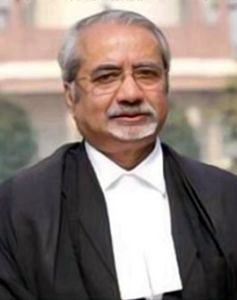The video showing sacks of partially burnt currency notes recovered from the outhouse of 30, Tughlaq Crescent, New Delhi, on the night of March 14 sent shock waves across the country. The house is allotted to Justice Yashwant Varma, a senior judge of the Delhi High Court.
This discovery has raised several pressing questions: How did such a vast sum of unaccounted cash―speculated to be upwards of Rs10 crore―end up in the storeroom of a sitting judge’s outhouse? Whose money is it? The media has been rife with speculation and insinuations. The faith of litigants in the fairness of the judicial process has been shaken and public perception of the judiciary has suffered a severe blow.
The fallout from the video has been nothing short of horrific. Some pessimists have asked: Is this the endgame for our democracy? Others have sneered: Is the match over, or is this just the tip of the iceberg? Some have even cynically remarked: Why waste money on lawyers? Whichever way one looks at it, the situation is grave.
To his credit, Justice Sanjiv Khanna, the chief justice of India, acted swiftly and decisively. Following the precedents set by the Supreme Court in the cases of C. Ravichandran Iyer Vs A.M. Bhattacharjee [1995 (5) SCC 457] dated September 5, 1995, and Additional District Judge Vs Registrar General High Court, MP [AIR 2015 SC 645] dated December 18, 2014, he constituted an in-house fact-finding committee comprising three judges. Not only that, before forming this committee on March 22, the CJI placed in the public domain the communications exchanged between the chief justice of the Delhi High Court and Justice Varma, along with the Delhi High Court chief justice’s communication to the CJI and the video footage of the semi-burnt currency notes. These actions, aimed at ensuring transparency, are both groundbreaking and historic. The CJI upheld the integrity of his office and the majesty of judicial accountability.
Justice Varma was given an opportunity to present his version of events. In response to the Delhi High Court chief justice’s communication, Justice Varma said no cash was ever placed in the storeroom of his residence either by him or any of his family members and that the stash appeared to be a conspiracy to frame and malign him.
The onus is now on the fact-finding committee to investigate further. The committee has the authority to devise its own procedure, ensuring adherence to the principles of natural justice. Justice Varma will have ample opportunity to defend himself. In the meantime, his judicial powers have been revoked, and the Supreme Court collegium has transferred him to the Allahabad High Court―a move aimed at insulating witnesses.
A critical question arises: is the judiciary equipped to tackle corruption of judges of constitutional courts? While high courts have the power to take action against errant district court judges, the Supreme Court lacks a similar mechanism to deal with misconduct by high court judges. My suggestion is that the Supreme Court, particularly its collegium, should formulate its own procedure within the constitutional framework (Part V, Chapter IV) to take full control of removing corrupt judges of constitutional courts. If this is not done, the political class will step in. Since the National Judicial Appointments Commission was struck down in 2015, politicians have been waiting for an opportunity to assert control over judicial appointments and accountability.
The current system for removing judges on grounds of “proved misbehaviour” or “incapacity” under Article 124(4) read with Article 218 of the Constitution has failed. The process is cumbersome and slow. Article 124 prescribes two-phases―statutory and parliamentary. The statutory phase entails investigation by a committee, subject to judicial review. The parliamentary phase starts after adverse findings in the statutory phase. Each house of Parliament is required to vote with majority of the house and with two thirds of the members present and voting.
It must also be remembered that Articles 121 and 211 prohibit Parliament and state legislatures from discussing the conduct of judges. Parliament can, of course, remove a judge in compliance with the Judges (Inquiry) Act, 1968.
Judges can also be removed under in-house guidelines adopted by the Supreme Court in 1999 for complaints received by the president, the CJI and chief justices of high courts. On July 25, 1991, in the K. Veeraswami judgment [1991 SCR (3) 189], a Constitution Bench of the Supreme Court held that higher judiciary came under the purview of the Prevention of Corruption Act, but prior sanction from the CJI is required to investigate a sitting judge. This precedent remains legally binding and sound.
So what is the way to streamline the process of removing an errant judge? Let the Supreme Court and its collegium take absolute charge and prevent politicians from taking over the judiciary.
―The author is a senior advocate, Supreme Court of India, who served as additional solicitor general of India.



